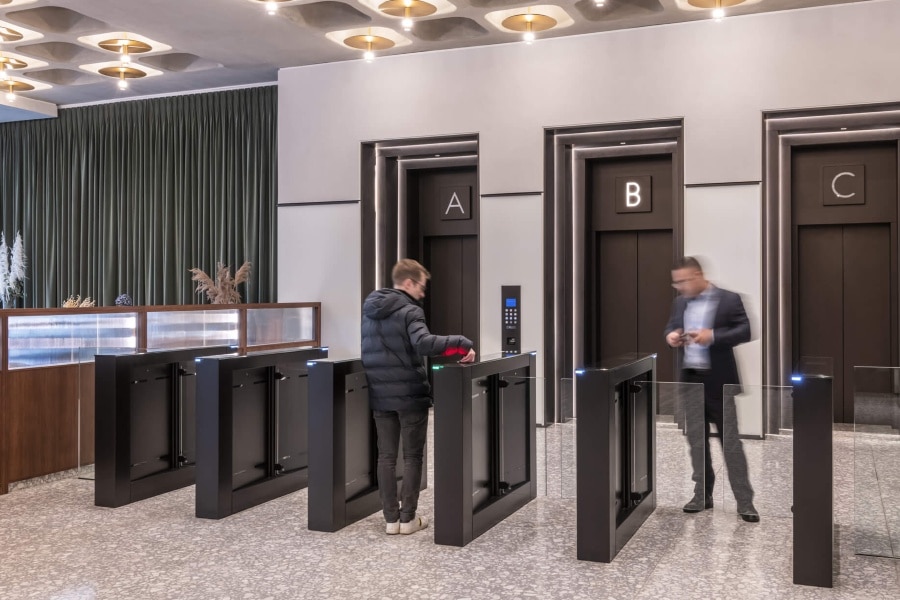Basic principles for securing your property


James Thorpe
Share this content
Tony Smith, Major Accounts and Marketing Manager, Integrated Design Limited offers some basic tips on how to deter and defeat intruders.
Leaving your building vulnerable is like leaving your valuables in the front seat of your car, inviting potential thieves.
It’s essential to address any weaknesses in your security, as it not only puts your building and its contents at risk but may also affect any insurance claim you have to make.
Deciding on your security approach
Security shouldn’t be for show or vanity. It should effectively serve its purpose.
When designing a new security system, tailor it to your specific requirements, consider factors like the environment, required security level, daily footfall, the need for personnel, integration with other access control technologies, space availability and design approach.
Of course, if you take possession of a building and use an inherited entrance control system, you lose that choice.
There are many risks associated with this situation: Not only will the system likely be a poor fit for your exact needs, human factors can limit the degree to which it fulfils its basic function.
If the security level is higher than your organisation requires, for example, you may find frustrated users and, in turn, security staff simply opening lanes or disabling aspects of the system.
Those sharing their multiple occupancy building with others need to be extra careful. It’s easier for wrongdoers to blend in with strangers from other organisations.
Often, criminals will seek to target a string of locations within the same building in rapid succession. A second line of defence, perhaps involving small, discreet units which don’t slow traffic, may be a solution.
How your security solution looks to potential wrongdoers
Criminals often assess entrance points when targeting a building, especially if there is constant activity with deliveries, staff and visitors. Consider how outsiders perceive your building’s security.
A recent trend, especially in the public sector, is a preference for highly visible systems such as full-height barriers. With appropriate design care and customisation options, these can be made to look appealing to staff and visitors, but daunting to potential attackers.
IDL has developed several full-height turnstile options and offers a range of materials and finishes as well as paints, lacquers and vinyl wrapping options.
Security away from the lobby
Securing main entry points is essential, but internal spaces containing valuable items or important data may need additional protection.
Interior doors can also be secured, to ensure that proper staff and visitors have access to appropriate sections of your space only.
They also provide a second chance at thwarting those who shouldn’t have gained admittance in the first place but somehow did. A belt and braces approach is the most effective way to minimise opportunistic crime.
Our Fastlane Door Detectives are optical-only units with no physical barrier. Infrared beams detect anyone passing through the doorway and immediately alert security staff.
Strong control of doorways and corridors is possible with no slowdown in throughput and a near invisible presence of small, door side units only. The multiple beams in the matrix can even detect subtle or inadvertent breaches.
As with full turnstiles, door side units can be integrated with whatever credential system you prefer. You might opt for smart cards, QR codes emailed to the individual’s own device or a mix.
Biometric credentials are increasingly popular, as they are harder to break than other security options and require the authorised user to bring nothing but themselves.
Face, eyes, fingerprints and voice are the common choices for biometric credentials. Systems are increasingly sophisticated, with options such as touchless fingerprint recognition no longer unusual.
Fastlane units are known for their ability to integrate with a very wide range of authentication solutions and we regularly showcase our systems alongside authentication partners to demonstrate this. In upcoming months, for example, we will be exhibiting with new partner, Alcatraz AI.
If you’re going to GSX in Dallas, look out for us on Booth #1533 with our North American distribution partner, Smarter Security, and also on the Alcatraz AI Booth #2608.
Both stands will feature Fastlane units integrated with Alcatraz AI’s Rock solution. We’ll also be showing the Alcatraz AI integration, plus other Fastlane offerings, at International Security Expo in London.
Collusion and deception
Social engineering is the term used to describe security attacks that centre on tricking people rather than systems.
You may have a good, fit-for-purpose system, but, if your staff fail to appreciate its importance, or are not fully aware of the procedures they are meant to be following, your location may be highly vulnerable.
In a busy location, even diligent staff will find it hard to spot instances of tailgating or what we call sidegating.
The same infrared beam matrix discussed above is present on our physical barrier turnstiles, meaning that you no longer need to solely rely on sharp-eyed guards to spot these behaviours.
If you have further questions, get in touch with IDL on +44 (0)20 8890 5550 or by emailing [email protected]



